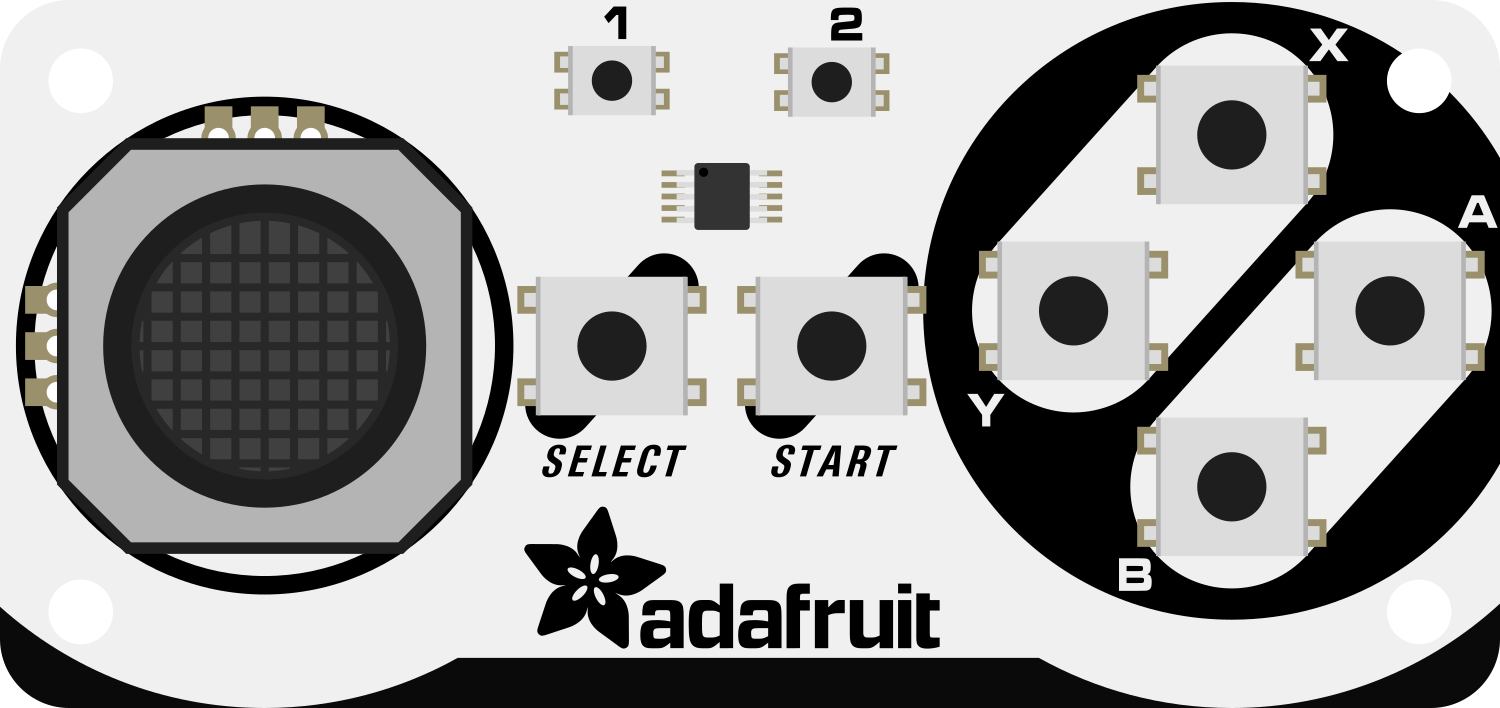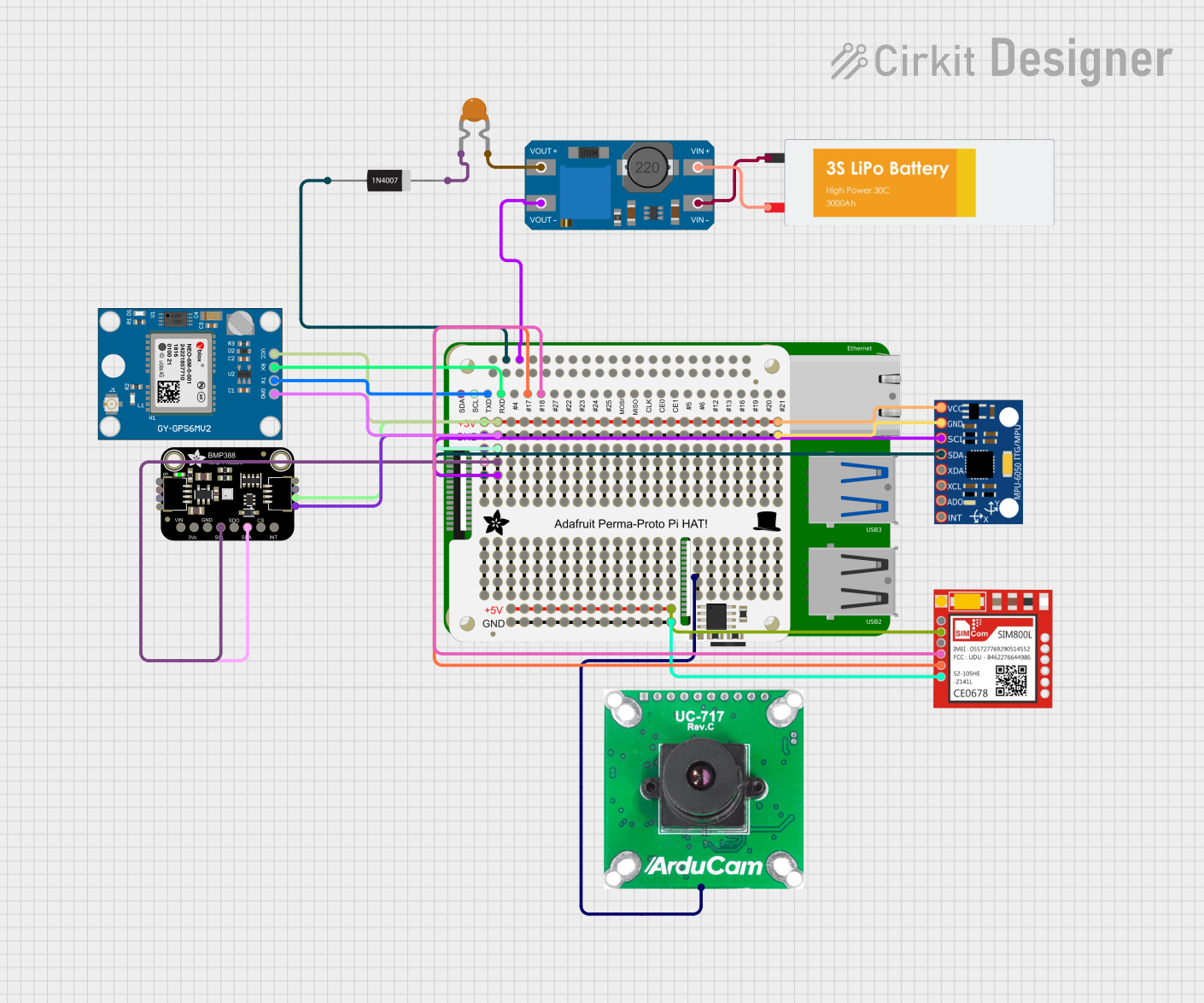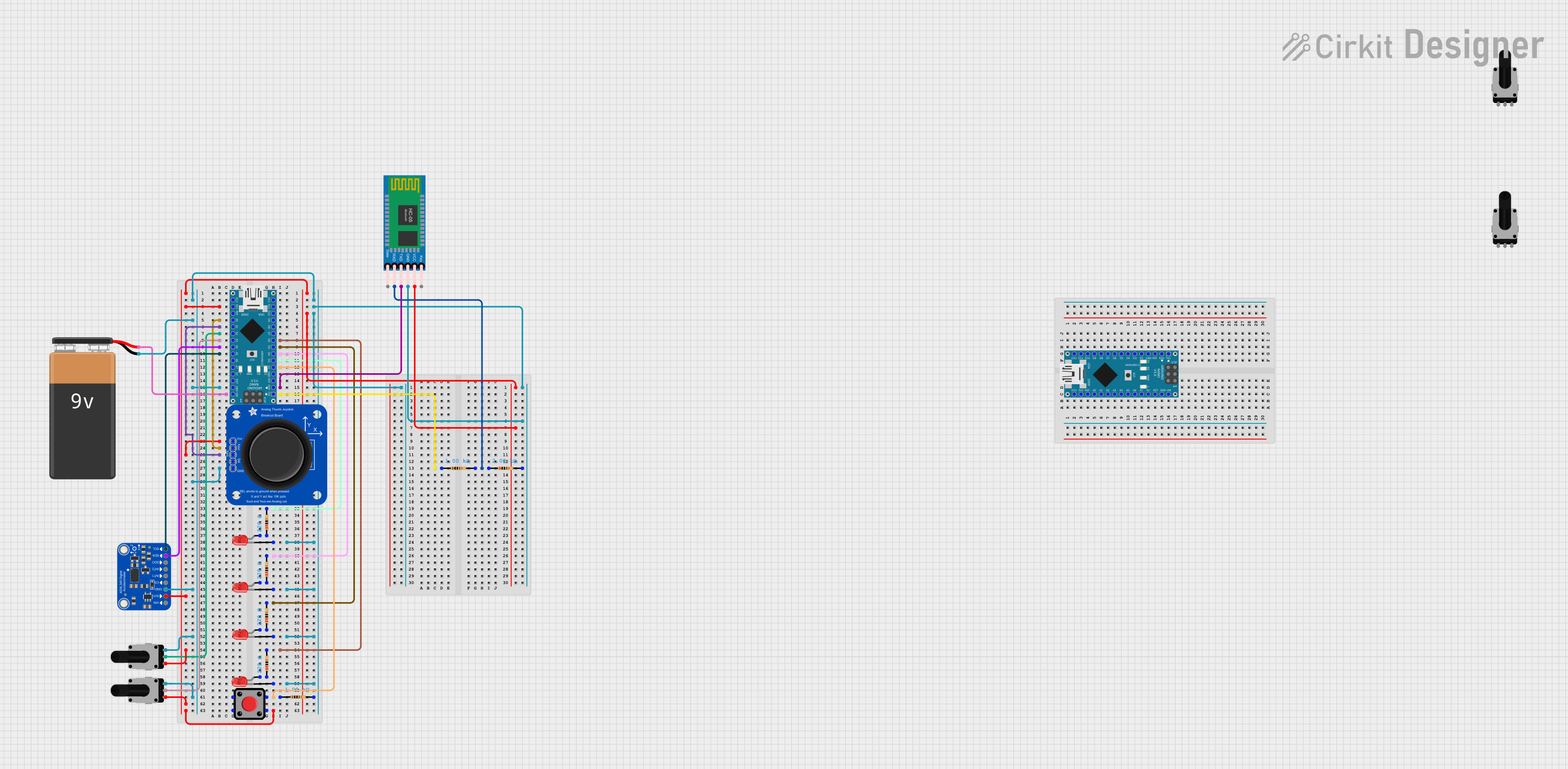
How to Use Adafruit Joy Bonnet: Examples, Pinouts, and Specs

 Design with Adafruit Joy Bonnet in Cirkit Designer
Design with Adafruit Joy Bonnet in Cirkit DesignerIntroduction
The Adafruit Joy Bonnet is a small, feature-packed game controller add-on for the Raspberry Pi Zero. It is designed to convert your Raspberry Pi Zero into a handheld game console, which can be used for playing retro games or for any DIY gaming project. The Joy Bonnet provides a classic gaming experience with its directional pad, multiple buttons, and an analog joystick.
Explore Projects Built with Adafruit Joy Bonnet

 Open Project in Cirkit Designer
Open Project in Cirkit Designer
 Open Project in Cirkit Designer
Open Project in Cirkit Designer
 Open Project in Cirkit Designer
Open Project in Cirkit Designer
 Open Project in Cirkit Designer
Open Project in Cirkit DesignerExplore Projects Built with Adafruit Joy Bonnet

 Open Project in Cirkit Designer
Open Project in Cirkit Designer
 Open Project in Cirkit Designer
Open Project in Cirkit Designer
 Open Project in Cirkit Designer
Open Project in Cirkit Designer
 Open Project in Cirkit Designer
Open Project in Cirkit DesignerCommon Applications and Use Cases
- Retro gaming emulation with platforms like RetroPie or Recalbox
- DIY handheld gaming projects
- Educational projects for learning game development and programming
- Custom user interfaces for interactive installations
Technical Specifications
Key Technical Details
- Compatibility: Raspberry Pi Zero (and other models with GPIO header)
- Power Supply: 3.3V and 5V from Raspberry Pi GPIO
- Interface: GPIO pins
- Buttons: 6 momentary push buttons, 1 analog joystick, 1 directional pad
Pin Configuration and Descriptions
| Pin Number | Description | Notes |
|---|---|---|
| 1 | 3.3V | Power supply for the joystick |
| 6 | Ground | Common ground for all controls |
| 11 | Button A | GPIO17 |
| 12 | Button B | GPIO18 |
| 13 | Button X | GPIO27 |
| 15 | Button Y | GPIO22 |
| 16 | Button L | GPIO23 |
| 18 | Button R | GPIO24 |
| 22 | Button Start | GPIO25 |
| 29 | Button Select | GPIO5 |
| 31 | Joystick Button | GPIO6 |
| 32 | Joystick X-Axis | Analog input |
| 33 | Joystick Y-Axis | Analog input |
Usage Instructions
How to Use the Component in a Circuit
- Mounting the Bonnet: Carefully align the pins of the Joy Bonnet with the GPIO header on the Raspberry Pi Zero and press down to connect.
- Software Configuration: Install the necessary software libraries and drivers to enable the Joy Bonnet. Adafruit provides a script that automatically sets up the Joy Bonnet for use.
- Testing: Once the software is installed, you can test the buttons and joystick using a GPIO input testing tool or by running a game that supports gamepad input.
Important Considerations and Best Practices
- Power Supply: Ensure that your Raspberry Pi Zero is adequately powered; insufficient power can cause erratic behavior or system instability.
- GPIO Access: The Joy Bonnet will occupy the GPIO pins; plan accordingly if you intend to use additional GPIO-based peripherals.
- Physical Handling: When attaching or detaching the Joy Bonnet, handle it by the edges to avoid electrostatic discharge damage to the electronic components.
Troubleshooting and FAQs
Common Issues
- Buttons Not Responding: Ensure that the Joy Bonnet is properly seated on the GPIO header. Check for any bent pins or obstructions.
- Erratic Joystick Behavior: Calibrate the joystick through the software settings to ensure accurate readings.
- Software Compatibility: Make sure you are using the latest version of the software and that it is compatible with your version of Raspberry Pi.
Solutions and Tips for Troubleshooting
- Reboot the Raspberry Pi: Sometimes, a simple reboot can resolve issues with peripheral detection.
- Check for Updates: Regularly update your Raspberry Pi's operating system and software packages to ensure compatibility and performance.
- Review Wiring: Double-check the pin connections against the pinout diagram to ensure everything is connected correctly.
FAQs
Q: Can I use the Joy Bonnet with other Raspberry Pi models? A: Yes, the Joy Bonnet can be used with other Raspberry Pi models that have a compatible GPIO header.
Q: Do I need to install drivers for the Joy Bonnet? A: Yes, drivers and software libraries are required for the Joy Bonnet to function correctly. Adafruit provides an installation script for easy setup.
Q: How do I map the buttons for use in games? A: Button mapping can be configured within the game or emulator settings. The Adafruit script sets up common mappings, but these can be customized as needed.
Q: Is it possible to use the Joy Bonnet for projects other than gaming? A: Absolutely. The Joy Bonnet can be repurposed for any project that requires button inputs and joystick control.
For further assistance, visit the Adafruit forums or the Raspberry Pi community forums where fellow users and experts can provide support and advice.